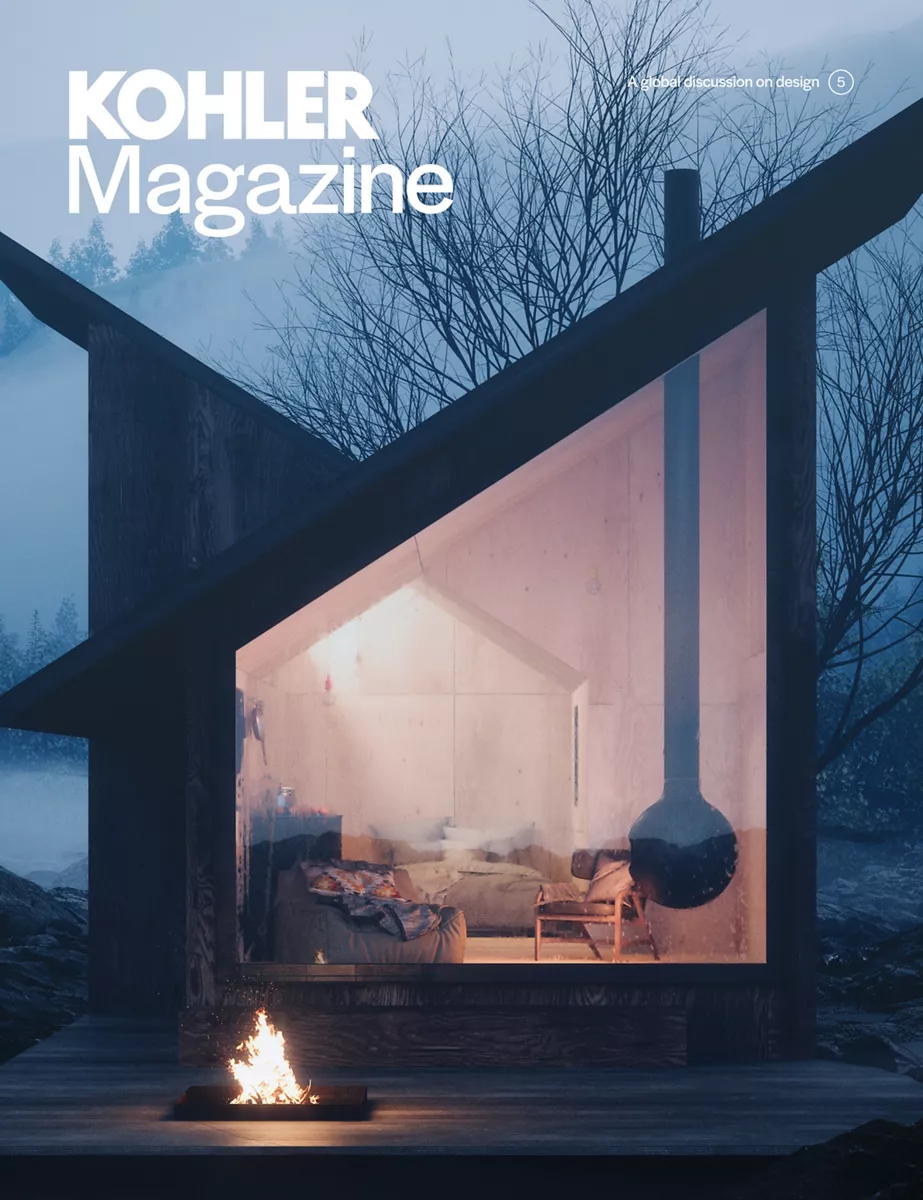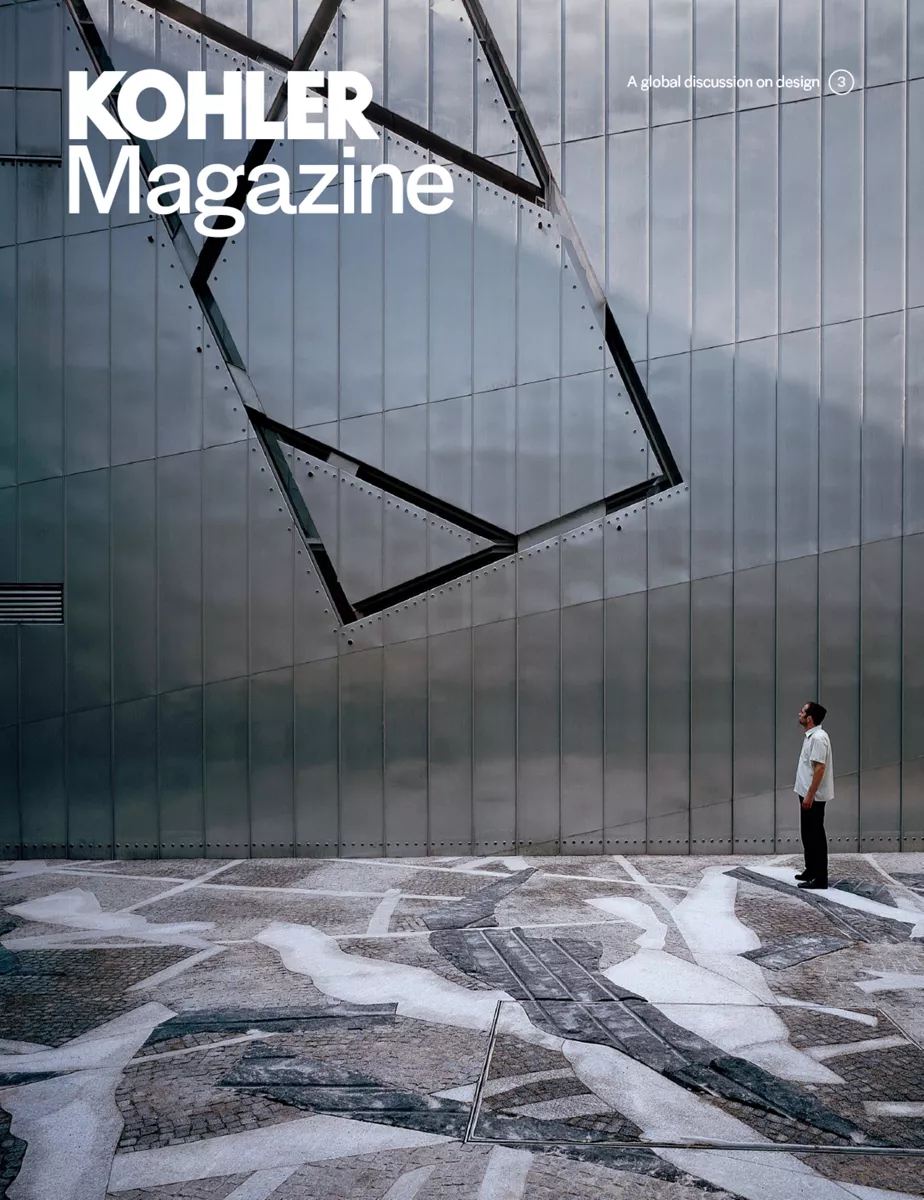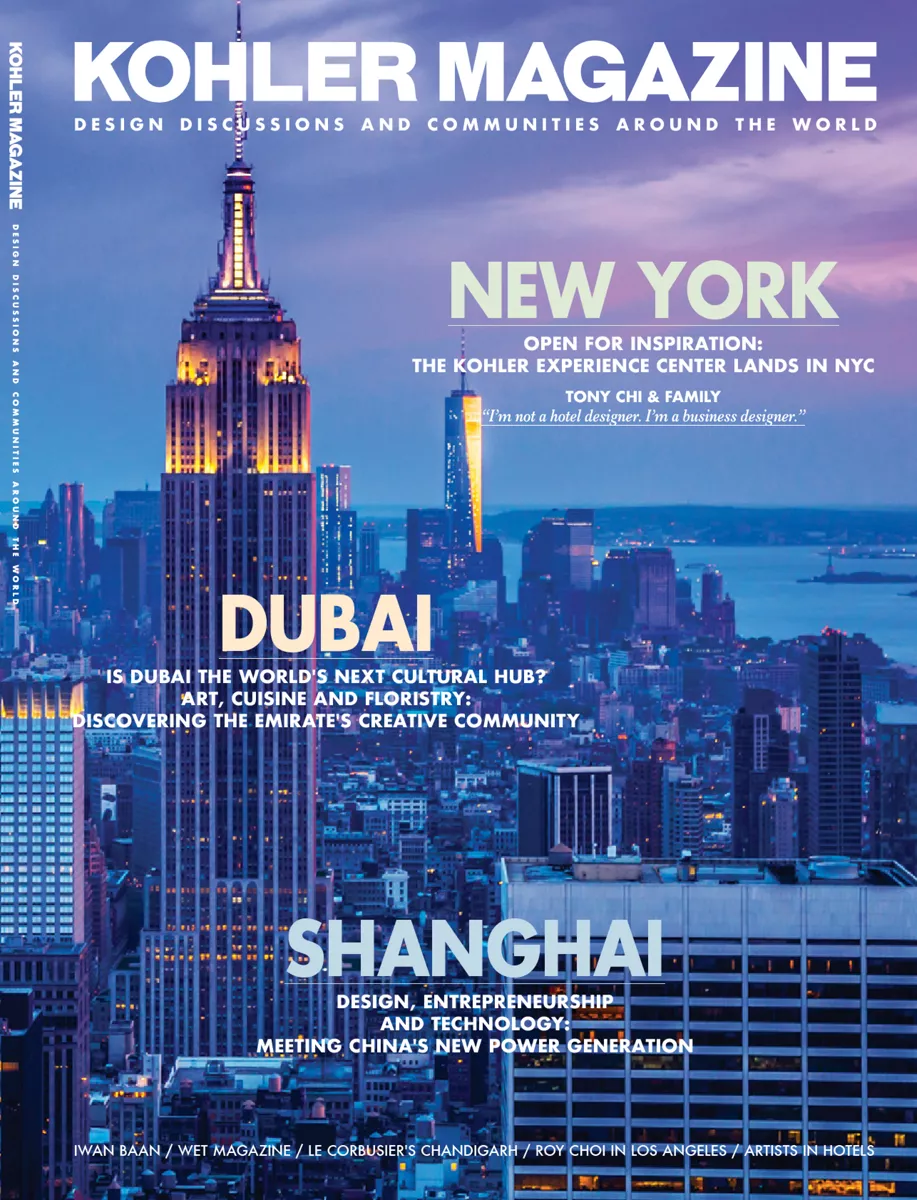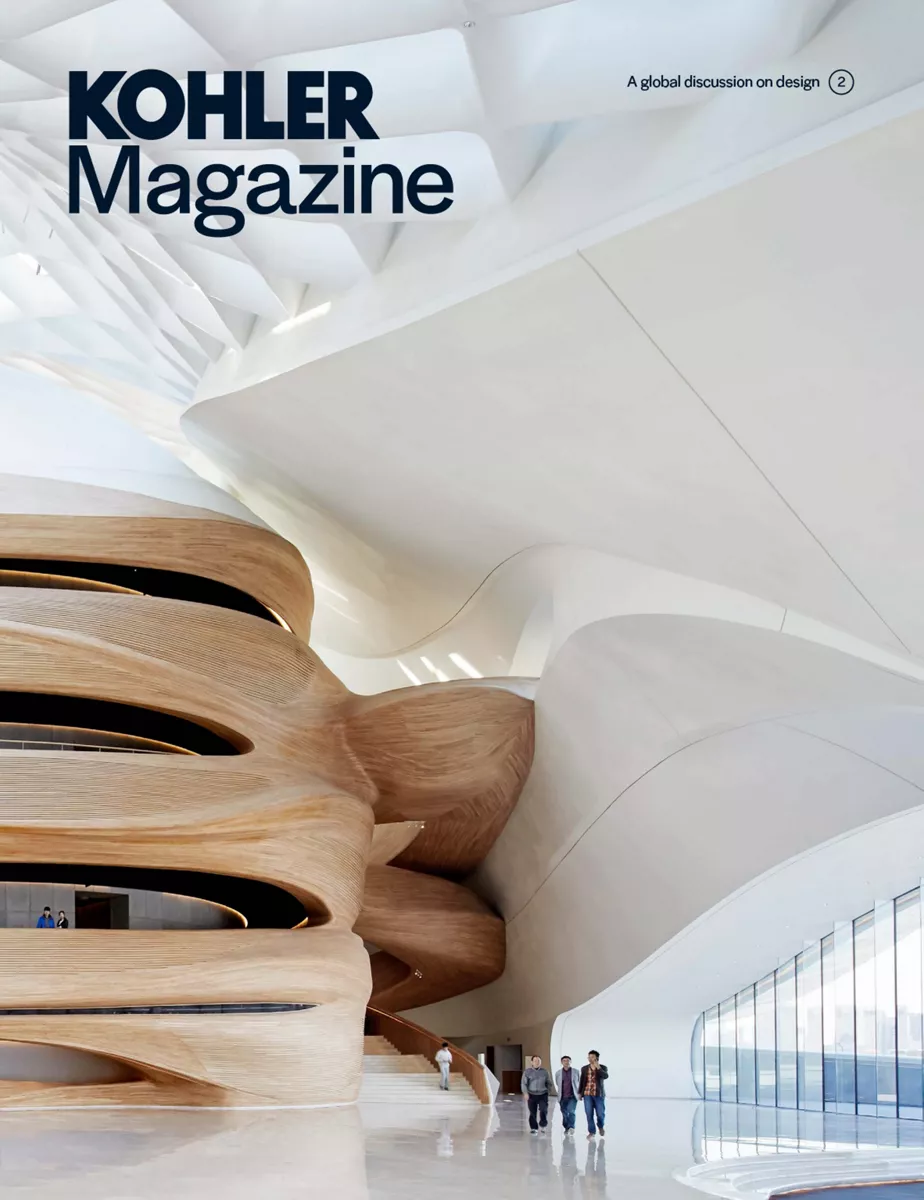Your Studio KOHLER Workspace
Your Studio KOHLER Workspace
Since founding her eponymous firm more than two decades ago in Windhoek, Namibia, South Africa-born architect Nina Maritz has been working in conditions perhaps unfamiliar to many outside of Africa, and has cultivated a deferential approach to creating spaces — one that champions local resources, materials, and labor. The firm’s oeuvre is a case study in the inventive intertwining of landscape and raw materials to shape spaces that seem to emerge from the earth, as if they had always been there. Indeed, she views her architectural interventions as natural outgrowths of the site and its challenges. A recent project is Shipwreck Lodge, a temporary hotel located on Namibia’s rugged and remote Skeleton Coast. The hotel is a series of ten pine-clad cabins that resemble the abandoned shipwrecks found along Namibia’s northern coast. Shipwreck Lodge caters to the experience-oriented traveler, and will operate for 25 years, after which the cabins and guest facilities will be dismantled, leaving no trace. We spoke to Nina about the project and about her life and work.
By John Bezold
Images by Michael Turek
As children we spent much of our time outdoors, in the mountains, on the beach, in a field or garden, so I now prioritize the outside-inside relationship between buildings and their contexts
Your mother is South African and your father Namibian. How has your upbringing between the two countries influenced your approach to architecture?
It’s impossible to not be influenced by the dramatic landscapes and nature of these two countries. As children we spent much of our time outdoors, in the mountains, on the beach, in a field or garden, so I now prioritize the outside-inside relationship between buildings and their contexts. I have a sense of environmental responsibility; over my life, I’ve witnessed the large-scale degradation of viable natural habitat. My frugal approach is inspired by the countries’ rich vernacular traditions and how rural people, especially, make wonderful buildings from very few means. I grew up under apartheid, so I’m extremely aware of social injustice and the need to combat it.
How did the Shipwreck Lodge commission come about, and why the 25-year time limit?
We were approached by a tourism consortium for the first concession bid, probably because of our reputation for prioritizing sustainability and our previous work in parks and natural environments, like the Twyfelfontein Visitors Center, Fish River Canyon Viewpoint, and the Habitat Research and Development Centre.
The Namibian Ministry of Environment and Tourism sets a time limit on tourism concessions in parks — to enable them to seek new bids and update their requirements — and 25 years is considered an adequate period for a tourism operator to recoup their investments and make a reasonable profit.
What qualities do you think are unique to or surprising about Namibia’s architecture scene?
What may come as a surprise is how remote our projects are, how low-tech our work can be, how little construction is pre-manufactured and how much is built on-site, and the scope of work, which ranges from small-scale rural projects to contemporary multi-story urban buildings. We simply don’t have the means to be extravagant or charge high fees for our work. While it’s rather different from working in other parts of the world, I would assume there are many similarities to other countries in the Global South.






